Decorated war hero of the Indo-China War 1962
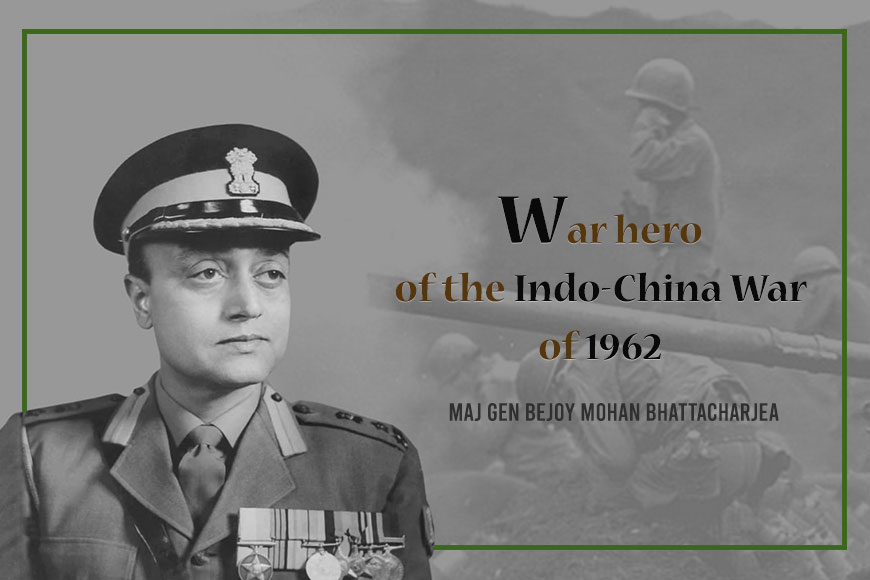
October 1962 and May 2020 are not the same, at least not in Sino-Indian context. India has not only emerged as one of the most well-equipped armed nations of the world, with latest technology missiles and armory at its disposal, but a country that scripts a tough foreign policy. No wonder, the country that lost a war in 1962, due to utter lack of its preparedness, did not lose the battle this time despite China’s constant aggression along LAC. But despite losing the war in 1962, there were several veterans and war heroes who courageously defended the Indian frontiers. Notable among them was a son from Bengal, Maj Gen Bejoy Mohan Bhattacharjea, who received a Mahavir Chakra (MVC), one of the highest honours in Indian Army.
 Maj-Gen Bejoy Mohan Bhattacharjea
Maj-Gen Bejoy Mohan Bhattacharjea
Lt Col Bejoy Mohan Bhattacharjea was commanding a battalion of Garhwal Rifles. On October 8, additional veteran and elite divisions were ordered to prepare to move into Tibet from the Chengdu and Lanzhou military regions. An extremely ill prepared Indian Army who never imagined or anticipated the Chinese aggression was taken aback. On 12 October, the then Prime Minister of India, Jawaharlal Nehru declared that he had ordered the Indian Army to ‘clear Indian territory in the NEFA of Chinese invaders.’
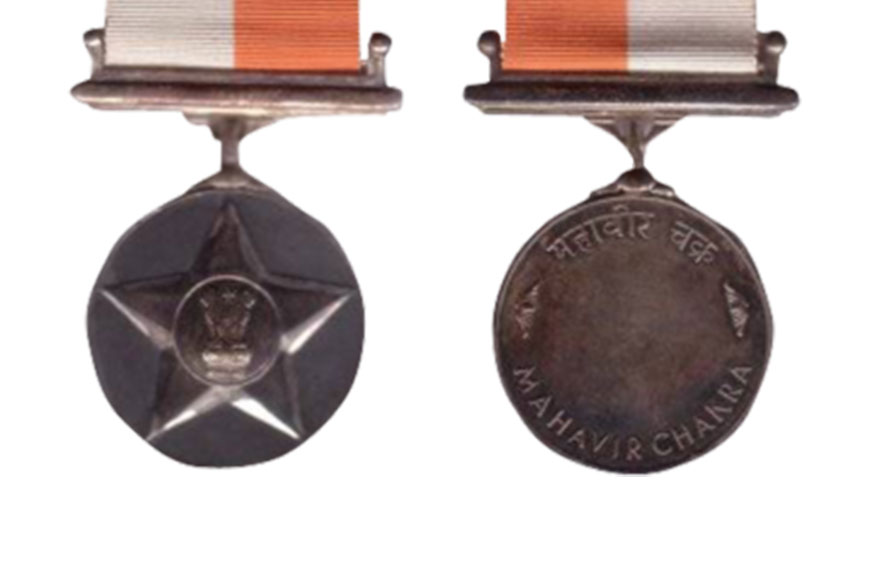 Mahavir Chakra
Mahavir Chakra
While on their ‘Withdrawal Action’ the morale of General Bhattacharjea’s troops had been shaken but they regained it under his inspiring leadership. Lieutenant Colonel Bhattacharjea himself accompanied some pa-trols. There is still continuing face-off between Indian and Chinese troops at some stretches along the Line of Actual Control (LAC) in Ladakh.
On 14 October, an editorial on People's Daily issued China's final warning to India. It read as follows: ‘So it seems that Mr. Nehru has made up his mind to attack the Chinese frontier guards on an even bigger scale. It is high time to shout to Mr. Nehru that the heroic Chinese troops, with the glorious tradition of resisting foreign aggression, can never be cleared by anyone from their own territory. If there are still some maniacs who are reckless enough to ignore our well-intentioned advice and insist on having another try, well, let them do so. History will pronounce its inexorable verdict ... At this critical moment ... we still want to appeal once more to Mr. Nehru: better rein in at the edge of the precipice and do not use the lives of Indian troops as stakes in your gamble.’
The Sino-Indian War of 1962 had erupted due to a Chinese-disputed Himalayan border. There had been a series of violent border skirmishes between the two countries after the 1959 Tibetan uprising, when India granted asylum to Dalai Lama. India initiated a defensive Forward Policy from 1960 to hinder Chinese military patrols and logistics, in which it placed outposts along the border, including several north of the McMahon Line, the eastern portion of the Line of Actual Control proclaimed by Chinese Premier Zhou Enlai in 1959.
On 17 November 1962, the enemy put five successive attacks on Se La, but all of them were repulsed under Maj Gen Bejoy Mohan Bhattacharjea’s courageous leadership. At one time, when the enemy brought medium machine gun fire on his flank and rear, he immediately sent out a party of volunteers, which destroyed the enemy position and captured the machine gun. On the night of 17 November, when the forward troops came under sudden enemy fire from a ridge, Lieutenant Colonel Bhattacharjea led his men gallantly, cleared the ridge area, but was captured. Throughout this period of over three weeks, Lieutenant Colonel Bhattacharjea led his men bravely with courage and determination disregarding his own safety.
Lt Col Bejoy Mohan Bhattacharjea was commanding a battalion of Garhwal Rifles. On October 8, additional veteran and elite divisions were ordered to prepare to move into Tibet from the Chengdu and Lanzhou military regions. An extremely ill prepared Indian Army who never imagined or anticipated the Chinese aggression was taken aback. On 12 October, the then Prime Minister of India, Jawaharlal Nehru declared that he had ordered the Indian Army to ‘clear Indian territory in the NEFA of Chinese invaders.’
In the Eastern Theatre, the PLA had attacked Indian forces near Se La and Bomdi La on 17 November. These positions were defended by the Indian 4th Infantry Division. Instead of attacking by road as expected, PLA forces approached via a mountain trail, and their attack cut off a main road and isolated 10,000 Indian troops. Se La occupied high ground, and rather than assault this commanding position, the Chinese captured Thembang, which was a supply route to Se La.
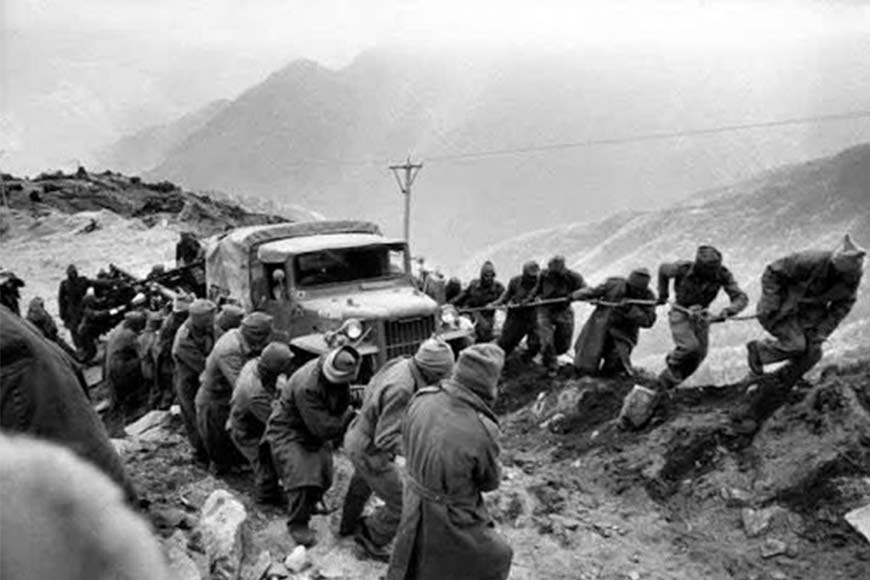
His Battalion’s stand at Nuranang was singled out in most accounts of the war as a ‘fine example of infantry battle in the History of India.’ For its brave stand against overwhelming odds, 4 GARH RIF was awarded the Battle Honour ‘Nuranang’ – the only battalion to be awarded a battle honour in NEFA, a singular distinction in the context of that particular conflict.
However, China declared a unilateral ceasefire to start on midnight, 21 November that stated:
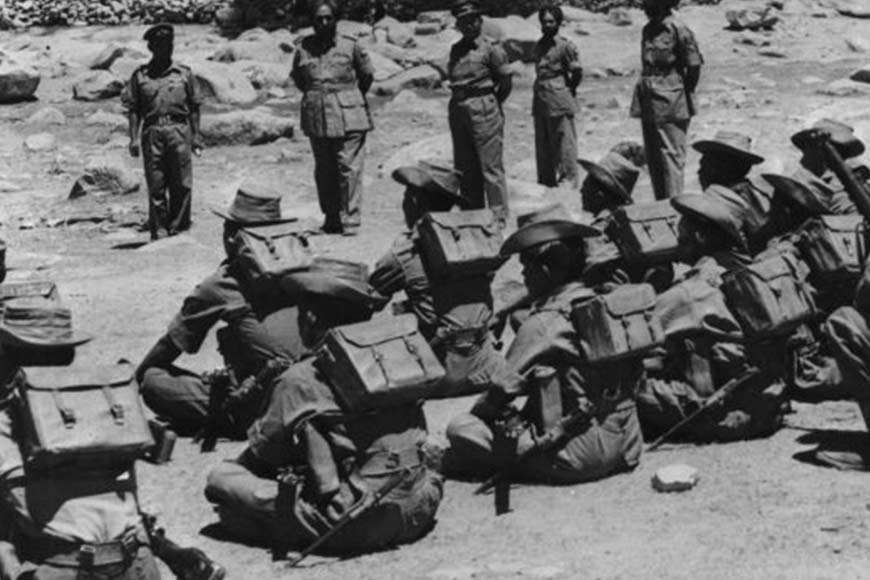
‘Beginning from 21 November 1962, the Chinese frontier guards will cease fire along the entire Sino-Indian border. Beginning from 1 December 1962, the Chinese frontier guards will withdraw to positions 20 kilome-tres (12 miles) behind the line of actual control which existed between China and India on 7 November 1959. In the eastern sector, although the Chinese frontier guards have so far been fighting on Chinese territory north of the traditional customary line, they are prepared to withdraw from their present positions to the north of the illegal McMahon Line, and to withdraw twenty kilometres (12 miles) back from that line. In the middle and western sectors, the Chinese frontier guards will withdraw twenty kilometres (12 miles) from the line of actual control.’
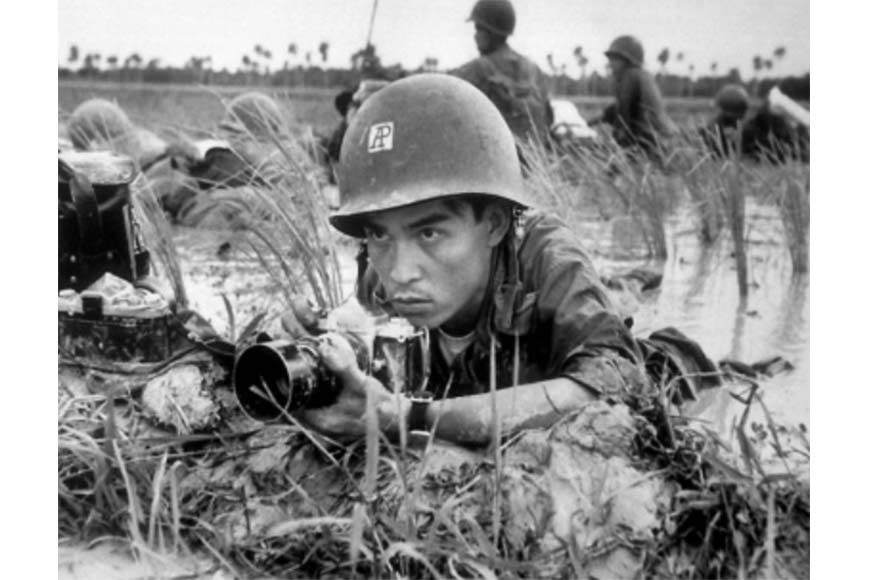
While on their ‘Withdrawal Action’ the morale of General Bhattacharjea’s troops had been shaken but they regained it under his inspiring leadership. Lieutenant Colonel Bhattacharjea himself accompanied some pa-trols. There is still continuing face-off between Indian and Chinese troops at some stretches along the Line of Actual Control (LAC) in Ladakh. But this time around Beijing knows only too well that PLA troops and its military hardware are thinly deployed along the LAC in the Tibet Autonomous Region (TAR), as Chinese-occupied Tibet is called. India, on the other hand, has enough troops stationed along the LAC, especially in the western and eastern sectors. And every time we speak of Indo-China war, brave hearts like Maj Gen Be-joy Mohan Bhattacharjea’s name will always shine bright.










